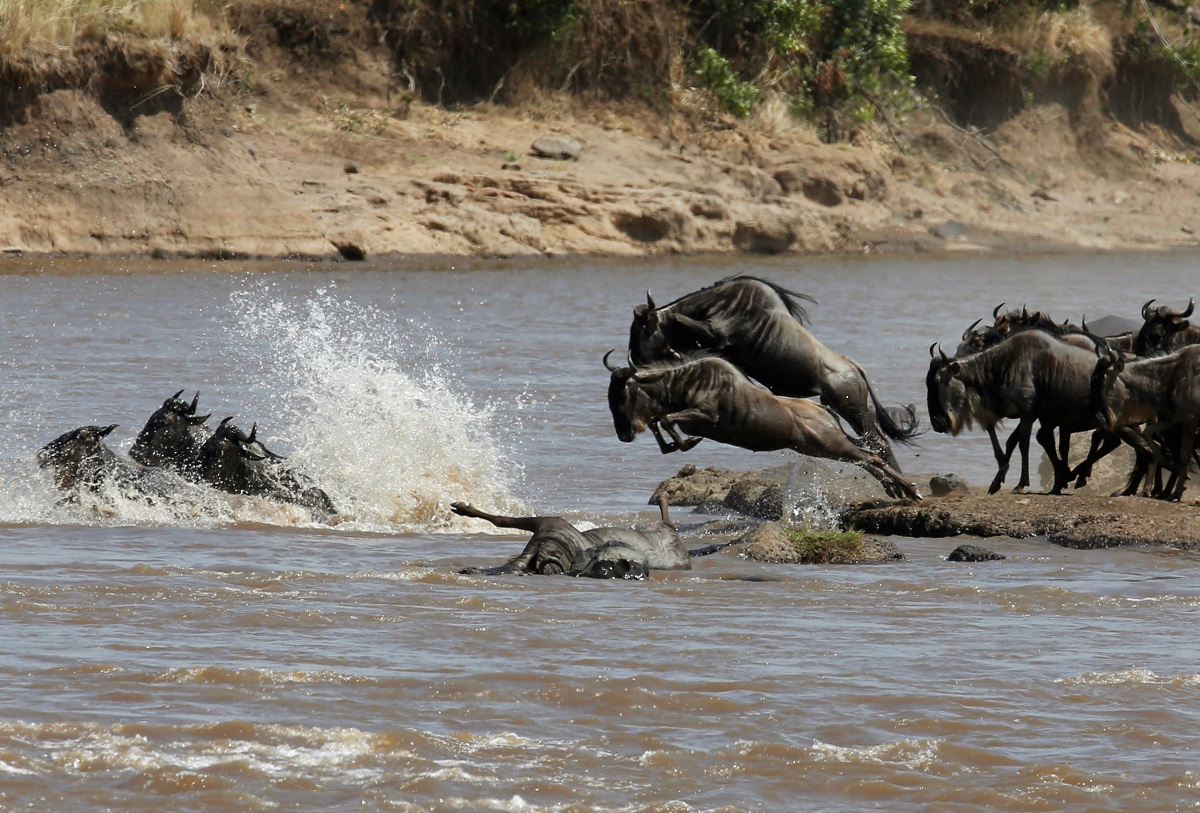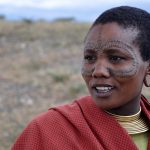Wildebeest Migration in Serengeti
View the great Wildebeest migration happens twice a year from the spacious main viewing decks or from the comfort of your private balcony, as you experience an Africa few have been privileged to see. The extraordinary annual Great Migration of wildebeest and other grazing herbivores across the Serengeti-Mara ecosystem is one of the greatest spectacles in the natural world.
Over two million herbivores partake in this journey, with about 200000 zebra and 500 000 Thomson’s gazelles behind the main players… one-and-a-half million wildebeest! Essentially the wildebeest are taking advantage of the strongly seasonal conditions, spending the wet season in Ndutu plains, the south-east and the dry season in the woodlands of the north-west. However, the sheer weight of their numbers also plays an important role in shaping the entire environment to their needs.
The short rains begin around early November. A little after this, in late November and December, the herds of the wildebeest migration arrive on the short-grass plains of the Serengeti. These is in south and east of Seronera. Around Ndutu and includes the north of the Ngorongoro Conservation Area. Dispersed across these plains, wildebeest and zebra are everywhere – feeding on the fresh, nutritious grasses. They stay here through January, February and March, with most wildebeest calves born in a short window around February. Gradually they spread west across these plains, then around April they start their great migration northern Serengeti.
By May the Serengeti’s wildebeest all seem to be moving north, migrating to seek fresh grazing and water. The area around Moru Kopjes and west of Seronera is then hectic with a series of moving columns, often containing hundreds of thousands of animals – joined by many zebra and a scattering groups of Thomson’s and Grant’s gazelles.
Some of the migration then head due north of Seronera, but most are usually further west. Around June the wildebeest migration is often halted on the south side of the Grumeti River which has some channels which block or slow their migration north. The wildebeest then congregate here in the Western Corridor, often building up to a high density before crossing the river. The river here is normally a series of pools and channels but it’s not continuous – and so whilst they always represent an annual feast for the Grumeti River’s large crocodiles, these aren’t usually quite as spectacular as the crossings of the Mara River further north.
The wildebeest migration continues moving northwards during July and August, often spreading out across a broad front. Some heading through Grumeti Reserve and Ikorongo, others north through the heart of the Serengeti National Park.
September sees the herds spread out across the northern Serengeti, where the Mara River provides the migration with its most serious obstacle. This river gushes through the northern Serengeti from Kenya’s adjacent Masai Mara Game Reserve. Watching the frantic herds of the wildebeest migration crossing the Mara River can be very spectacular. There are often scenes of great panic and confusion as during this time of the year its common to see herds of gnus crossing the Mara River north in one day, and then back south a few days later.
By October the wildebeest herds are migrating again with more accord, all are heading south through Western Loliondo and the Serengeti National Park’s Lobo area, returning to the green shoots which follow the rains on the short-grass plains of the Southern Serengeti in November.
Then the whole Serengeti Wildebeest migration starts again …





Comment(1)-

comment admin says
December 20, 2019 at 7:48 amThis is awesome safari…